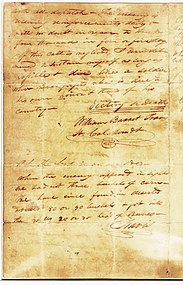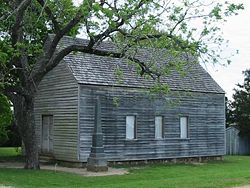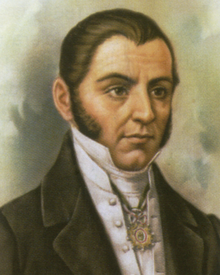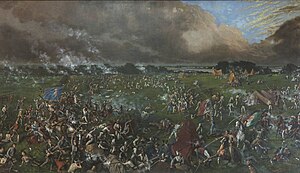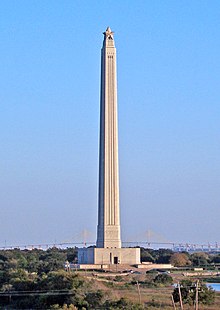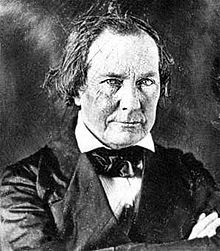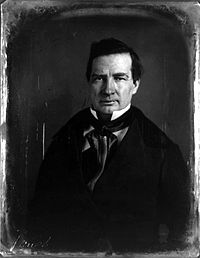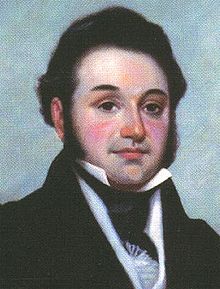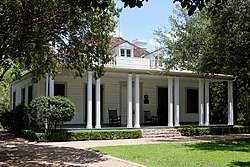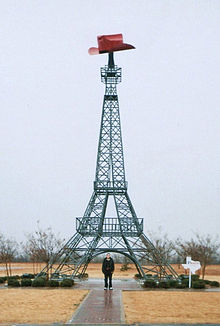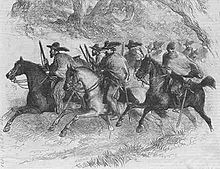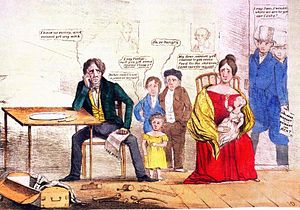God bless the Republic of Texas!-President Rick Perry 2011
If we are to liberate ourselves from Santa Anna's tyranny than a stand must be made at the Alamo.-Colonel James Bowie to Colonel James Fannin. 1836
Five years ago I came to this country to fight for a free and independent Texas. Never have I regretted it.- Davie Crockett 1841.
At the beginning of the year of our Lord 1836 a new nation was emerging among the prairies of the Southwest, a land of opportunities and dreams come true, the land of Texas. The causes of the Texas Revolution while numerous revolve around the many disputes between Antonio Lopez de Santa Anna and the Anglo settlers of Mexican Texas. Between the Anglo-Texans and Mexicans there was no compromise available: from slavery, protestant vs. catholic, english vs. spanish, one side was eventually going to dominate the other. Though still peace remained until the reign of Santa Anna. Beggining in 1835, Santa Anna would call for complete centralization of Mexico; abolishing the 1824 constituion, enforcing anti-American immigration laws, and brutally suppressing the Zacatecas revolt. Tired of living under the rule of an oppresive tyrant the people of Texas rose up in a war of secession so that they may govern themselves and live in freedom and liberty.

A Map of the Republic of Texas, 1836
In January 1836 the war was looking well for the rebels. Several small scale battles had been won and the Mexican force under Martin Perfecto de Cos had been driven from Texas. Soon however, the Revolution would reach an epic climax, Santa Anna was on his way to Texas, coming with him a force of 6,000. The Texan leaders knew they had to make a stand and claim victory but where?
In mid-January Jamies Bowie was sent under orders of Sam Houston to the Alamo with 30 men to destroy and evacuate the mission. Under James C. Neill, a garrison of 100 had fortified the mission following the Siege of Bexar (San Antonio). When Bowie arrived Neill was able to convince him the importance of maintaining San Antonio against Mexico and how it was necessary to win the war. Bowie and Neill soon began preperations to make the Alamo into a fortified Citadel and requested reinforcements from all over Texas to defend San Antonio from Santa Anna's onslaught. The most important call for help that would ultimately decide the battle was Bowie's letter to James Fannin.
Up until that point an invasion was being planned by the Texan army to capture Matamoros, Tamaulipas. While as ill-conceived as the Quebec invasion in 1775, the goal was to capture a major Mexican city that would drive the fight away from Texas and pressure Mexico into independence. Unfortunately the plan met several logistical problems and 500 Texans that were supposed to take part in the invasion were stuck in Refugio. On February 8, after receiving word that the Mexican army had marched from Matamoros, Fannin received a letter from Bowie detailing the plight of the Alamo and the need for reinforcements. To this day it is unknown what the exact details of the letter were as a copy never survived, but whatever was inside convinced Bowie that decisive action had to be taken to defend San Antonio. Rallying the 500 men at Refugio, Fannin gave a rousing speech calling upon the men to defend their freedom in the immenent battle for the heart of Texas(at the time San Antonio was the capitol). On February 9, Fannin led all 500 Texans and an additional 9 cannons to reinforce the Alamo. They arrived on Febuary 15, just weeks away before the pivotal Battle of the Alamo.

Colonel James Fannin
POD: Alamo is successfully reinforced with troops that would have gone off on the expedition or go to Goliad. The Texans get a tremendous boost to defense and the battle becomes more equal.
If we are to liberate ourselves from Santa Anna's tyranny than a stand must be made at the Alamo.-Colonel James Bowie to Colonel James Fannin. 1836
Five years ago I came to this country to fight for a free and independent Texas. Never have I regretted it.- Davie Crockett 1841.
At the beginning of the year of our Lord 1836 a new nation was emerging among the prairies of the Southwest, a land of opportunities and dreams come true, the land of Texas. The causes of the Texas Revolution while numerous revolve around the many disputes between Antonio Lopez de Santa Anna and the Anglo settlers of Mexican Texas. Between the Anglo-Texans and Mexicans there was no compromise available: from slavery, protestant vs. catholic, english vs. spanish, one side was eventually going to dominate the other. Though still peace remained until the reign of Santa Anna. Beggining in 1835, Santa Anna would call for complete centralization of Mexico; abolishing the 1824 constituion, enforcing anti-American immigration laws, and brutally suppressing the Zacatecas revolt. Tired of living under the rule of an oppresive tyrant the people of Texas rose up in a war of secession so that they may govern themselves and live in freedom and liberty.
A Map of the Republic of Texas, 1836
In January 1836 the war was looking well for the rebels. Several small scale battles had been won and the Mexican force under Martin Perfecto de Cos had been driven from Texas. Soon however, the Revolution would reach an epic climax, Santa Anna was on his way to Texas, coming with him a force of 6,000. The Texan leaders knew they had to make a stand and claim victory but where?
In mid-January Jamies Bowie was sent under orders of Sam Houston to the Alamo with 30 men to destroy and evacuate the mission. Under James C. Neill, a garrison of 100 had fortified the mission following the Siege of Bexar (San Antonio). When Bowie arrived Neill was able to convince him the importance of maintaining San Antonio against Mexico and how it was necessary to win the war. Bowie and Neill soon began preperations to make the Alamo into a fortified Citadel and requested reinforcements from all over Texas to defend San Antonio from Santa Anna's onslaught. The most important call for help that would ultimately decide the battle was Bowie's letter to James Fannin.
Up until that point an invasion was being planned by the Texan army to capture Matamoros, Tamaulipas. While as ill-conceived as the Quebec invasion in 1775, the goal was to capture a major Mexican city that would drive the fight away from Texas and pressure Mexico into independence. Unfortunately the plan met several logistical problems and 500 Texans that were supposed to take part in the invasion were stuck in Refugio. On February 8, after receiving word that the Mexican army had marched from Matamoros, Fannin received a letter from Bowie detailing the plight of the Alamo and the need for reinforcements. To this day it is unknown what the exact details of the letter were as a copy never survived, but whatever was inside convinced Bowie that decisive action had to be taken to defend San Antonio. Rallying the 500 men at Refugio, Fannin gave a rousing speech calling upon the men to defend their freedom in the immenent battle for the heart of Texas(at the time San Antonio was the capitol). On February 9, Fannin led all 500 Texans and an additional 9 cannons to reinforce the Alamo. They arrived on Febuary 15, just weeks away before the pivotal Battle of the Alamo.
Colonel James Fannin
POD: Alamo is successfully reinforced with troops that would have gone off on the expedition or go to Goliad. The Texans get a tremendous boost to defense and the battle becomes more equal.
Last edited:

